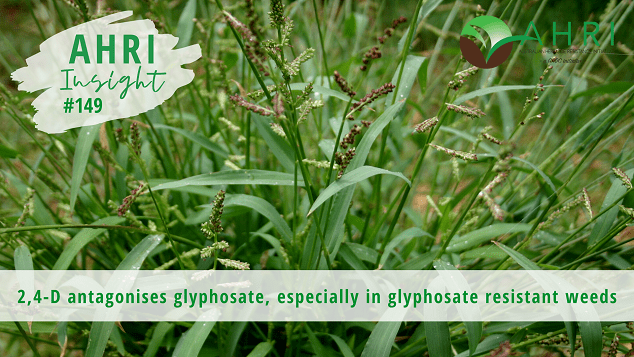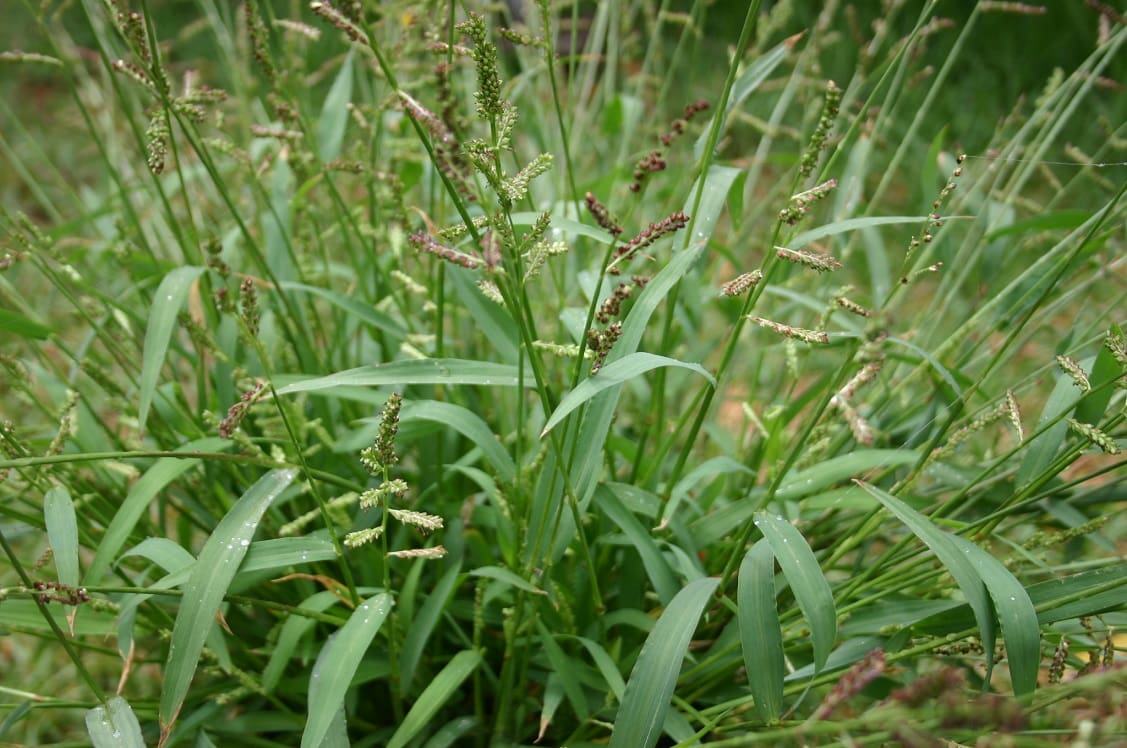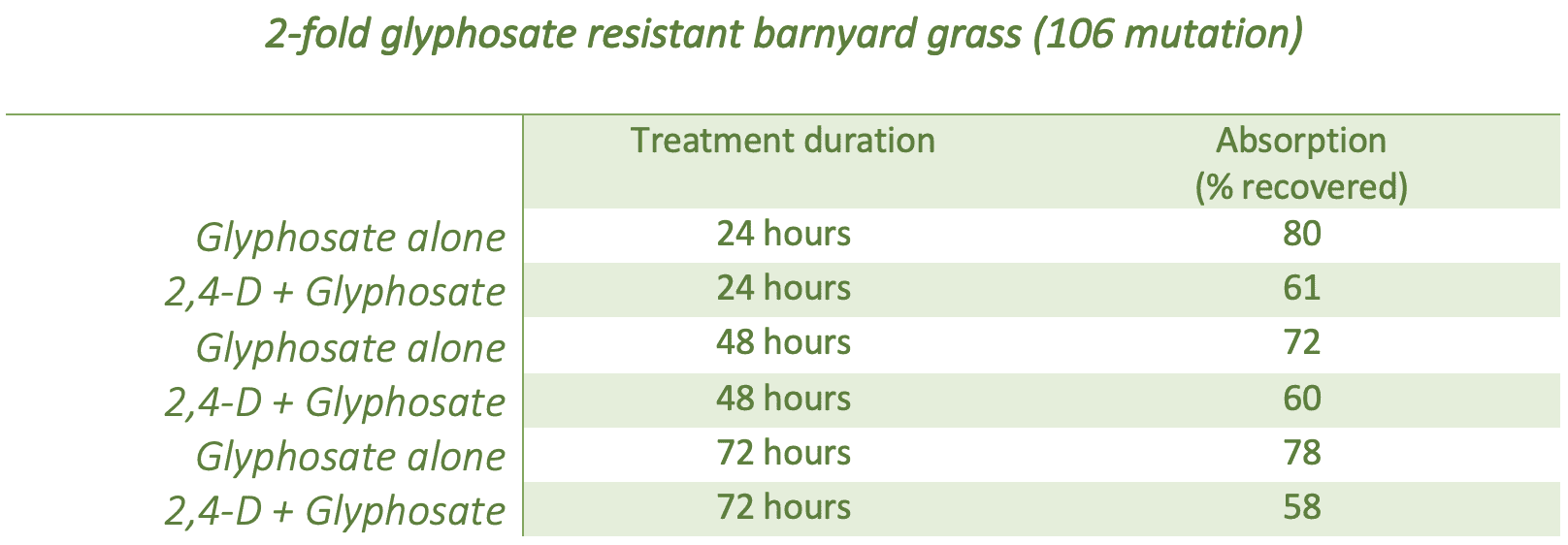
BACK in the day we used to open a drum of herbicide in the corner of the paddock and the weeds started dying. Some weeds were so susceptible that we could just put a drum of herbicide on the back of the ute and drive around the farm and the weeds would turn up their toes because they knew what was coming!
Okay, this is a mild exaggeration, but generally speaking the weeds were so susceptible that we could get away with a sub-optimal spray job, and the weeds would die.
Now that we have resistant weeds, we really need to hold our tongue right when we’re spraying to give us any chance of success.
We have known for some time that when mixing 2,4-D with glyphosate there can be some antagonism and grass control can be compromised. However, the antagonism is often relatively minor and can often be overcome by selecting the right formulation with perhaps a minor rate adjustment.
Some recent research by a former AHRI researcher Jingbo Li and others shows that glyphosate resistance changes this. They studied two populations of barnyard grass with relatively low-level glyphosate resistance and found that when 2,4-D Amine or Ester was added to the tank with glyphosate, barnyard grass control was greatly reduced. They went on to discover that this is due to an effect on uptake and translocation.

Awnless Barnyard grass (Echinochloa colona) is a weed of northern Australia which has recently become more difficult to manage due to glyphosate resistance. (Picture: Michael Widderick)
Glyphosate susceptible grass
The AHRI researchers started with a population of susceptible barnyard grass and found that a low rate of glyphosate resulted in 100pc control of 3 leaf plants. Adding 2,4-D Amine to the glyphosate reduced the level of control slightly.
Table 1: Survival percentage of susceptible barnyard grass sprayed with glyphosate alone or glyphosate + 2,4-D Amine

Low level glyphosate resistant grass
The next step was to test glyphosate and mixes with 2,4-D on some barnyard grass with low level, two-fold resistance. This population has the EPSPS P106L target site mutation. This time it took 1L/ha glyphosate 540 (Roundup Powermax) to control 100pc of the plants. The addition of either 2,4-D Amine (Amicide Advance 700) or 2,4-D Ester (Estercide Xtra 680) resulted in severe antagonism of the glyphosate and 85pc to 90pc of the grass survived
Table 2: Survival percentage of low level resistant barnyard grass sprayed with glyphosate alone, glyphosate + 2,4-D Amine, or glyphosate + 2,4-D ester

Medium level glyphosate resistant grass
The researchers then tested a population of barnyard grass with medium level, 8-fold resistance to glyphosate mainly due to non-target site resistance mechanisms (e.g. glyphosate metabolism). This population took 3L/ha Roundup Powermax to achieve 100% control and once again the addition of 2,4-D led to severe antagonism of the glyphosate.
Table 3: Survival percentage of medium level glyphosate resistant barnyard grass sprayed with glyphosate alone, or glyphosate + 2,4-D Amine.

Why is it so?
It appears that 2,4-D reduces the uptake and translocation of the glyphosate. Plants with the low level glyphosate resistance (P106L mutation) were used in radiolabelled 14C glyphosate uptake and translocation experiments. Maximum glyphosate uptake was achieved within 24 hours of application and the addition of 2,4-D to glyphosate resulted in reduced uptake regardless of the interval between treatment and measurement of glyphosate uptake.
Table 4: Absorption and translocation of 14C-glyphosate applied with or without 2,4-D to a single leaf of glyphosate resistant barnyard grass.

In some cases, 2,4-D can cause antagonism of a mixing partner herbicide, and other times it can be synergistic. Watch this space for more to follow in future editions of AHRI insight.
Summary
When we are applying herbicides to susceptible weeds, the reality is that we are often high on the dose response curve and we don’t notice low level antagonism from mixing partners. When applying herbicides to weeds with low to medium level resistance we are often applying just enough herbicide to kill the weed, and any antagonism of this rate of herbicide will lead to reduced weed kill. We have known for some time that mixing 2,4-D products with glyphosate can cause minor antagonism for grass weed control and this research demonstrates that this is now of particular importance when we are dealing with glyphosate resistant weeds.
Herbicides used in this study
Glyphosate 540g/L – Roundup Powermax, Bayer
2,4-D Amine 700g/L applied at 700 gai/ha – Amicide Advance 700, NuFarm
2,4-D Ester 680g/L applied at 700 gai/ha – Estercide Xtra 680, NuFarm
Adjuvant: BS1000 (0.2% v/v)
Source: Australian Herbicide Resistance Initiative (AHRI)

HAVE YOUR SAY